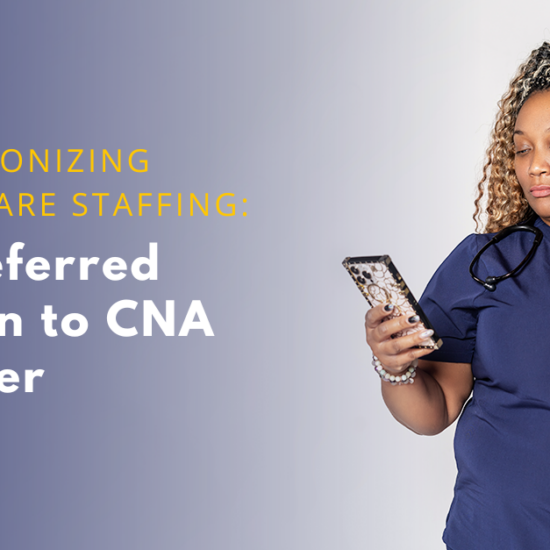New Nursing Home Minimum Staffing Requirements By State for 2023
Numerous studies throughout the years have shown that the quality of care residents receive in a nursing home is directly related to the adequacy of the nursing home’s staffing levels. Insufficient nursing home staffing levels are associated with negative outcomes for residents including increased rates of hospitalization, dehydration, weight loss, and pressure ulcers. In an effort to ensure quality of care and safety, nursing homes are required to have sufficient nursing staff to properly care for each of their residents.
However, the current minimum thresholds for nursing home staffing may soon be changing. Read on to learn more about the new nursing home minimum staffing requirements and the effect they could have on facilities.
New federal staffing requirements may be coming
A December 2021 study found that although minimum staffing thresholds exist, the requirements are vague and not adequate for providing seniors with an acceptable level of care. While federal requirements state that facilities must maintain “sufficient nursing staff to meet residents’ needs”, specific guidelines are not set and state regulations vary drastically.
As a result, nursing homes have been able to determine what “sufficient” nursing staff means on their own, which has led to wide variations in nursing home staffing across the country—and as a result, wide variations in the level of care and safety of residents.
In an effort to improve these factors, the Centers for Medicare and Medicaid Services (CMS) is proposing new nursing home minimum staffing requirements at a federal level.
How does new federal staffing requirements affect facilities?
Although setting minimum staffing requirements could have a positive impact on the overall quality of care and resident satisfaction, the financial impact could be devastating for some facilities.
The nursing home industry has been struggling in recent years, with many facilities already cutting back on services due to budget constraints. The new federal staffing requirements would likely increase costs for nursing homes, which could lead to even more closures and cutbacks—ultimately making it even more difficult for seniors to get the care they need.
In addition, the current nursing shortage could also make it difficult for facilities to find and retain high-quality nursing staff, which would reduce the number of residents that facility could support.
Current nursing home staffing requirements by state
While the staffing requirements may be changing, here are the current staffing guidelines, according to the State Nursing Home Staffing Standards Summary Report for the markets supported by NurseDash.
- Current Federal Staffing Requirements: Sufficient Numbers of all nursing staff to meet residents’ needs. 1 RN 8 consecutive hrs/7d/wk & 1 RN/LPN for 2 remaining shifts. Must have 1 RN who is full-time DON (5 days/wk); if fewer than 60 residents, DON may also be Charge Nurse.
Florida (Tampa)
- Sufficient Staff: To maintain the highest practicable physical, mental, and psychological well-being of each resident.
- Licensed Staff (RN/LPN/LVN) for up to 120 residents: 1 DON RN full-time. If DON has institutional responsibilities, add 1 Assistant DON RN full-time.
- Licensed Staff (RN/LPN/LVN) for 121+ residents: Add 1 Assistant DON RN full-time, 1 RN/LPN each shift, 1.0 RN/LPN hprd (24 hour average). Cannot go below 1:40 RN/LPN ratio.
- Certified Nurse Aide Staff (CNA/NA): 2.5 hprd by CNA, not below 1:20 CNA to resident ratio.
Illinois (Chicago)
- Sufficient Staff: To meet the nursing needs of all residents.
- Licensed Staff (RN, LPN/LVN): 1 DON RN full-time or minimum 36 hrs/wk (at least 18 hrs between 7am and 7pm).
- For Skilled Nursing Facilities 100+ beds: 1 Assistant DON RN full-time, minimum 36 hours, 4 days/week.
- For Intermediate Care Facilities 150+ beds: 1 Assistant DON RN/LPN full-time. May provide direct care and be counted in direct care ratios.
- Direct Care Staff: 2.5 hprd for intermediate care, 3.8 hprd for skilled nursing care. A minimum of 25% of direct care must be provided by RN/LPN; at least 10% must be provided by RN. (Note: For 1–49 beds, DON may provide direct care and be included in direct care ratios.)
Ohio (Cleveland, Cincinnati, Columbus)
- Sufficient Staff: To meet the needs of the residents in an appropriate and timely manner.
- Licensed Staff (RN, LPN/LVN): 1 DON RN full-time (8 hours, between 6am–6pm).
- Direct Care Staff: 2.5 hprd minimum (included RN/LN with administrative or supervisory duties).
Pennsylvania (Pittsburgh)
- Sufficient Staff: To meet the needs of all residents.
- Licensed Staff (RN, LPN/LVN): 1 DON RN full-time (1 per facility); 1 RN Charge Nurse 24hrs/7d/wk.
- For 1–59 residents: 1 RN Day & Evening; 1 RN/LPN Night. If LPN is Charge Nurse, RN must be on call.
- For 60–150 residents: 1 RN 24hrs/7d/wk
- For 151-250 residents: 1 RN & 1 LPN 24hrs/7d/wk
- For 251–500 residents: 2 RNs 24hrs/7d/wk
- For 501–1,000 residents: 4 RNs Day; 3 RNs Evening & Night
- For 1001+ residents: 8 RNs Day; 6 RNs Evening & Night
- Direct Care Staff: 2.70 hprd; 1:20 ratio of nursing staff to residents; 2 staff on duty at all times
Texas (Austin, Dallas, Houston, San Antonio)
- Sufficient Staff: To attain or maintain the highest practicable physical, mental, and psychosocial well-being of each resident.
- Licensed Staff (RN, LPN/LVN): 1 DON RN full-time 40 hrs/wk
- For 1-60 occupancy: DON may be Charge Nurse; 1 RN 8 consecutive hrs/7d/wk; 1 RN/LPN Charge Nurse; 24 hrs/7d/wk; 0.4 hprd RN/LPN or 1:20 RN/LPN every 24 hrs (Exclude administrative time of licensed staff and DON in a multi-level facility).
- Direct Care Staff: No minimum requirement
Ease your staffing struggles with NurseDash!
NurseDash is an on-demand healthcare marketplace that connects nurses with nursing homes and other healthcare facilities. Facilities can post open shifts that result from job vacancies, sickness, vacations, or even an increase in minimum staffing requirements and nurses can choose the shifts that work best for them, in their desired location.
NurseDash offers a variety of features to help nursing homes with their staffing needs, including:
- Customized staffing solutions: Create customized staffing solutions that fit your unique needs, which we know can change at any time.
- A large database of nursing staff: Access a large database of nursing staff, making it easy to find the perfect match for your needs.
- A variety of nursing specialties: Find nursing staff with a variety of specialties, including geriatric nursing, palliative care nursing, and more.
- Cost savings: By using NurseDash to hire your short-term nurses, you not only won’t be paying overtime to your employees, but you’ll also benefit from fewer fees than standard staffing agencies.
If you’re looking for a nursing staffing solution, look no further than NurseDash. Contact us now for staffing assistance.






